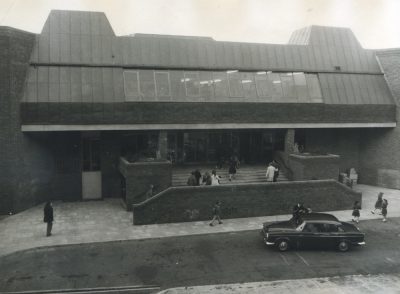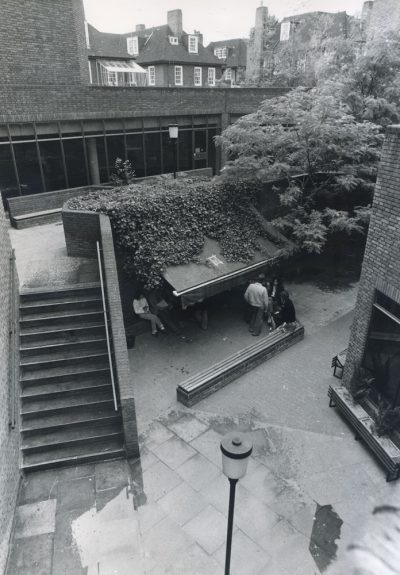
ASL has been through tremendous changes to become the school that it is today. These changes have helped the school expand over time and it has given its students amazing opportunities. In order to appreciate and understand how this school came to be, we need to step back in time to when ASL was first founded.
Stephen L. Eckard, founder of ASL, was given the idea to open an American curriculum based school by his colleagues from the North American Service of the BBC. In 1951, he made a small school in his flat in Knightsbridge with 13 students, all boys.
Halfway through the year, the school became very well known and more teachers were hired. The school was moved to a more spacious place in Chelsea in order to accommodate the expanding community. As the school continued to grow, in 1952, it was shifted to a large house in Grosvenor Square. Later on in 1957, ASL added two houses in Gloucester Gate. Afterwards in 1963, four more houses were added in York Terrace. ASL repositioned in St. John’s Wood in 1971. At this point, a proper site was purchased for the school, rather than houses.
The school’s main entrance was located on Loudoun Road. There were no gates bordering the school, and no guards monitoring the property. Doorways leading directly to classrooms were used leisurely to enter and exit the school. “There were no gates around the school. So you could come in and out of the school from classes,” explained Mrs. Solange Kidd, a graduate of the class of 1985, and now a middle school French teacher.
Once you walked through the main entrance on Loudoun Road, you were immediately in the Lower School where students arrived. Also, the theater couldn’t seat as many people and the depth of the space was much shallower. Additionally, if you walked towards the gymnasium wing, you would only find one gym
A mix of high school and middle school classes were in the top pods because the current high school wing was non-existent. You could still see all the familiar staircases, but they lacked the vibrant colors they wear today. The classrooms were only separated by partition walls made of thin, flimsy material. “If you were in the back row, you could look back and see the kids in another class through the wall and contact them,” said Mr. John Farmer, ASL’s athletic director as well as a former ASL student.

Outside Lower School classrooms was a large, enclosed smoking area called “the pit,” which was used by teachers and students. “The pit” was located outside the faculty lounge, which is currently the lower school art room.
Space has had the biggest impact on ASL. It has helped and provided for the school in so many ways. Ms. Wendy Robinson, from the Development Office, said, “It has enabled all parts of the school to be in one place, lower, middle, and high.”
In September of 2000, the high school area was added on top of the gym area. This area added an additional 24,000 square feet to the school campus. Art studios, a new library, and a gym were also created. The gym enabled students to have physical education indoors, the art space gave them a place to express themselves, and the new library gave a wealth of knowledge.
There was also a lot of expansion for facilities. In June of 2006, ASL opened the School Center for Education and Arts. The center has 450 seats and gave a grand teaching and performing area. Most assemblies and school shows happen in the School Center.
The second major construction took place in 2014. This construction included a 25-meter swimming pool with 6-lanes, fitness center with multipurpose space, and new middle school science labs.
There was also the Community Arts Building. This building contains art rooms and teaching space for electives. This development provides an environment that lets students practice their passions and lets teachers guide them along the way. It makes the place unique and gives it something that other schools might not have.
The school has come a long way since 1951, and ASL would not be the same if it wasn’t for these changes. ASL will continue grow bigger and widen its horizons while providing an incredible learning environment for its students.
